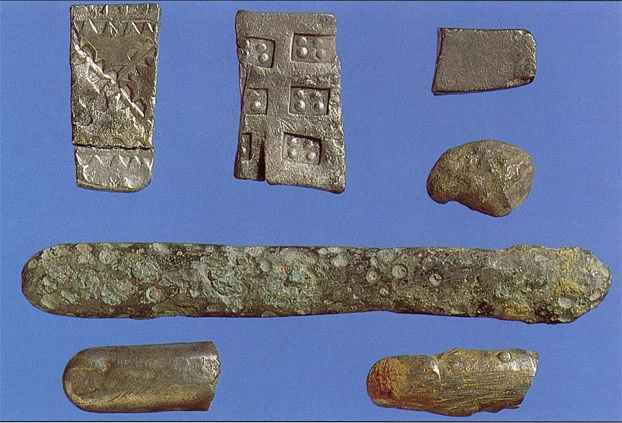When the Vikings invaded North Wales
Historical records tell us of a series of terrifying attacks by Viking invaders on the coasts of Britain, France and Ireland in the last decade of the 8th century. Archaeological evidence show that these invaders may not have been as brutal as records claim.
The first recorded raid on Wales occurred in 852, and we know of attacks by
Vikings on Anglesey and Gwynedd from 854 onwards. Rhodri Mawr, ruler of Gwynedd (844-78), led resistance to these early onslaughts, killing the Danish leader Gorm in 855.In 903 Vikings came to Anglesey after being driven out of Dublin. According to both Irish and Welsh records they failed to gain a foothold in Wales, and sailed on to Chester. Again in 918, Anglesey was ravaged by Vikings.
Frequent attacks occurred on the island during the second half of the 10th century on the island; Olaf of Dublin built a castle known as 'Olaf's Castle' or 'Castell Bon y Dom' about the year 1000.
This one-sided historical record of Vikings terrorising the land has now been transformed by archaeology. Viking contact was certainly hostile and brutal at times, but often opportunist. In some areas, they rapidly settled as peaceful farmers, and archaeology has provided evidence for them as colonisers, merchants, and skilled craftsmen.
The nature of Viking settlement in Wales remains one of the mysteries of early medieval archaeology, none more so than on Anglesey. This is emphasised when the Viking measurement of 'a day's sail' is plotted from the Isle of Man, Dublin, Chester and the Wirral, for they all intersect in Anglesey waters.
10th-century fragments of silver ingots and arm-rings
The Vikings name Anglesey
Physical evidence of the Vikings in Wales is even less definite. Certainly, we know that the Vikings were familiar with Anglesey because of the place-names of Scandinavian origin which have been given to prominent coastal features as navigational aids: Onguls-ey itself, traditionally thought to incorporate a personal name - presumably a Viking leader, The Skerries, Piscar, Priestholm (prestaholmr) and Osmond's Air near Beaumaris, from Asmundr & eyrr, a gravel bank near the sea.
Uncovering evidence of Vikings in Wales
For a more realistic picture of Viking Wales, we have to turn to archaeology. Most Viking silver found in Wales has been discovered in coastal areas. St Deiniol's monastery in Bangor has produced two hoards, one dated to around 925, and a small group of coins deposited about 970. The
Bryn Maelgwyn hoard of coins near Llandudno was deposited in the mid-1020s, and may be Viking booty rather than local savings; and a remarkable hoard of five complete Viking silver arm rings of were found in the 19th century at Red Wharf Bay, Anglesey.The Viking Age settlement at Llanbedrgoch
One of the most intriguing archaeological sites belonging to the Viking period is to be found at
Llanbedrgoch , Anglesey and research by Amgueddfa Cymru has helped reveal the nature of Viking Age life which has puzzled scholars for decades.
Comments - (6)
Today is Gary Hocking's birthday and was looking up info about his birthplace and whether Vikings settled there as I think I have roots. Told my spouse about the disease and he said that he has it n showed me how his pinky finger is curling up! He is Swedish!
Happy Birthday Gary Hocking..
http://hamley.blogspot.com/p/remembering-gary-hocking-1937-1962.html
I also have an hereditary illness called antitrypsyn deficiency.. Alpha-1 for short. It's known as the Viking disease. As they say it was a mutant gene which they bought over. Which affects lungs, and also liver.